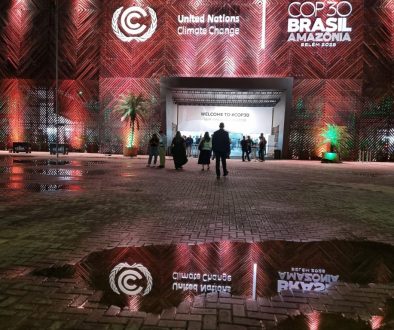The wonder of wetlands
What would the world be, once bereft Of wet and wildness? Let them be left! Gerald Manley Hopkins (1844 – 89), “Inversnaid”.
Wetlands occur in all shapes and sizes from tiny mountain seeps to gigantic river deltas. Wetlands all have one thing in common – they are threatened by humans. Let us explore the majesty of wetlands but also their vital importance to life on earth. Wetlands are where earth and water meet. Some of our most magnificent ecotourism destinations in southern Africa are wetlands. Wetlands range from springs, seeps, mires and bogs in the mountains, to midland marshes and floodplains, to coastal lakes, mangrove swamps and estuaries. All are linked by rivers. Think of the Drakensberg mountains where you can see the seeps (water oozing out of the ground) glinting in the early morning sun against the collosal Amphitheatre, an arc in a wall of basalt cliffs flanked by two majestic peaks. Such a setting is often overlooked as a wetland yet this is where mighty rivers (and humble streams) begin their lives. Within the circuit of a black eagle’s flight over the Drakensberg peaks, there are Lesotho’s alpine wetlands. The high plateau of the Drakensberg escarpment houses a myriad colourful alpine plants and short grasses. Underneath these plants lies water or sodden soil, representing the only true African mires apart from those in the Rift Valley mountains in Kenya. These bogs and fens feed the rivers that South Africa has now coveted via the Lesotho Highlands Water Project. Gauteng Province used to rely only on the Vaal and Tugela rivers to feed its voracious industrial thirst for water. But by 2025, when all the water from Lesotho is ‘on stream’, South Africa will finally not have sufficient water to meet our rising demand unless we learn to live within our hydrological means. A short distance from its source, the Tugela river cascades 853 metres into three stages over the edge of the Amphitheatre, forming the spectacular Tugela Falls. Most major rivers have a floodplain. Think of the Nylsvley in Northern Province and Pongola River in KwaZulu-Natal. Floodplains are areas of land seasonally flooded by rivers and often looking like vast areas of grassland. The Nyl Floodplain, a mere two-hour drive from Johannesburg is one of the prime birding sites in southern Africa. It is situated on the interface between the Waterberg Mountains and the Springbok Flats. The floodplain itself covers 16 000 hectares. Unless there is a flood, the Nylsvley looks like large tracts of grassland with small pools of water here and there. After floods, water lilies arrive mysteriously as if they sprang from the reflected clouds overhead and birders are offered a spectacle hardly equalled anywhere else in the world. Of the 102 waterbird species recorded, 58 have bred in the Nylsvley. Many are endangered. After the floodplains, one gets to the marshy reedbeds such as those found in Wakkerstroom (Mpumalanga Province), Seekoeivlei in the Free State, Blesbokspruit in Gauteng or Blood River Vlei in KwaZulu-Natal. Wakkerstroom, in south east Mpumalanga (near Volksrust) is a vital catchment for the Vaal and Pongola Rivers and boasts a rich diversity of plant and animal life. The Wakkerstroom Wetland Reserve, is already internationally recognised as one of South Africa’s prime birding spots. And then, when a river finally enters the sea, there are estuaries. Think of our most famous wetland, St Lucia with its beautiful lagoon. Lake St Lucia is the largest estuarine system in South Africa covering an area of 325 square km and supports large flocks of flamingoes, pelicans and other waterbirds. Estuaries rate with rainforests and coral reefs as the planet’s most prolific habitats, supporting a range of species far greater than other environments. A rich variety of plants, birds, fish, crabs, prawns and many smaller creatures live together in a close-knit community of interdependent relationships. Wetlands are not only treasure houses of beauty and biodiversity, they perform critical life-protecting functions as well. For example : They store and release water, essential in times of drought By acting as water “sponges”, wetlands prolong streamflow during dry seasons. Also, less water is lost through evaporation from wetlands than open water areas such as dams, because vegetation covers the water and soil. They prevent the worst of flood damage Wetlands spread out and slow down water moving through the catchments because of their characteristically gentle slopes and the resistance offered by the dense vegetation. Wetland vegetation also binds and stabilises the soil and recovers rapidly from flood damage. They purify water Wetlands are natural filters, helping to purify water by trapping pollutants, heavy metals, disease-causing bacteria and viruses, as well as synthesised organic pollutants such as pesticides. Besides the above “indirect” benefits of wetlands, the direct benefits include livestock grazing (if it is done on a sustainable basis), fibre production for handcrafts, fishery production (from floodplains and estuaries) and wildlife production. With so many benefits – and absolutely free of charge – you wonder by 50% of the world’s wetlands have already been destroyed. Worldwide wetlands are threatened by :- wetland drainage and cropping
- timber production
- overgrazing
- overharvesting of plants
- poorly managed burning
- the building of dams
- mining and industrial pollution
- urbanisation



